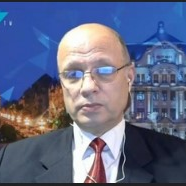Advanced Control Techniques of Power Electronics
A special issue of Electronics (ISSN 2079-9292). This special issue belongs to the section "Power Electronics".
Deadline for manuscript submissions: closed (15 April 2024) | Viewed by 5699
Special Issue Editors
Interests: electrical machines and drives; electrical power networks
Interests: converter synthesis; power factor correction; power quality; modeling in power electronics; resonant converters; soft switching
Special Issue Information
Dear Colleagues,
For many years, the development of electronics has been continuously accelerating, and its adoption and all-around use have taken on entirely new dimensions. Undoubtedly, with the further use of electronics in improving safety, independence, health protection, quality of life, industry, and science, in every aspect of human life; issues related to power electronics are of key importance. Power electronics have a direct impact on the energy supplied to power all other devices, as well as its quality, reliability, and availability of energy. The world learned the importance of energy independence and, above all, obtaining energy from different sources—energy diversification. Scientific research on obtaining energy from renewable sources is significantly accelerating, the results of which are becoming increasingly important, both for countries but also for individual people. As responsible researchers, we must ensure that communities have a chance to meet the CO2 emission targets, which additionally affects the value of power electronics development. Reliability of power systems, high efficiency, low maintenance costs, and reliable operation in various conditions have become a very important issue. This will promote the breaking down of further barriers to technological progress and, at the same time, improve the energy efficiency of designed devices. In this Special Issue, we would like to cover topics that are important for power electronics-based systems, energy conversion, energy harvesting and recovery, improving energy utilization, and other energy-related aspects. Examples of the topics include:
- Energy efficiency in power electronic systems;
- Modern control systems of power electronic systems;
- Reliability of power electronic systems;
- High-efficiency power electronic system topologies;
- Modeling and simulation of power electronic systems;
- Renewable energy systems;
- Thermal management and cooling technologies;
- Minimizing power consumption;
- Microgrids, smart grids, and distributed generation systems;
- Design power electronic systems for improving availability, maintainability, and safety;
- New materials used in power electronics systems;
- Electromagnetic compatibility in power electronic systems;
- Modern methods of power electronic system design;
- Artificial intelligence in power electronics;
- Energy storage;
- Automotive charger.
Prof. Dr. Mihai Cernat
Prof. Dr. Dan Florentin Lascu
Guest Editors
Manuscript Submission Information
Manuscripts should be submitted online at www.mdpi.com by registering and logging in to this website. Once you are registered, click here to go to the submission form. Manuscripts can be submitted until the deadline. All submissions that pass pre-check are peer-reviewed. Accepted papers will be published continuously in the journal (as soon as accepted) and will be listed together on the special issue website. Research articles, review articles as well as short communications are invited. For planned papers, a title and short abstract (about 100 words) can be sent to the Editorial Office for announcement on this website.
Submitted manuscripts should not have been published previously, nor be under consideration for publication elsewhere (except conference proceedings papers). All manuscripts are thoroughly refereed through a single-blind peer-review process. A guide for authors and other relevant information for submission of manuscripts is available on the Instructions for Authors page. Electronics is an international peer-reviewed open access semimonthly journal published by MDPI.
Please visit the Instructions for Authors page before submitting a manuscript. The Article Processing Charge (APC) for publication in this open access journal is 2400 CHF (Swiss Francs). Submitted papers should be well formatted and use good English. Authors may use MDPI's English editing service prior to publication or during author revisions.
Keywords
- power electronic systems
- energy storage
- energy efficiency






